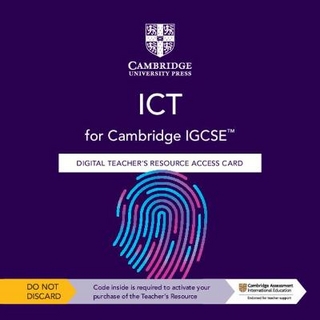
Tomorrow′s Professor – Preparing for Careers in Science and Engineering
John Wiley & Sons Inc (Hersteller)
978-0-470-54672-7 (ISBN)
- Keine Verlagsinformationen verfügbar
- Artikel merken
Richard M. Reis is the Executive Director of the Stanford Integrated Manufacturing Association and the Associate Director for Global Learning Partnerships in the Stanford University Learning Laboratory. Dr. Reis is also a consulting professor in both the Stanford University Electrical Engineering and Mechanical Engineering Departments. Among his many responsibilities is the teaching of a year-round seminar on preparing graduate students for academic careers in science, engineering, and business.
Preface xiii Acknowledgments xv Introduction xvii PART I Setting the Stage 1 Chapter 1 The Academic Enterprise 3 Unlike Any Other Institution 4 Key Characteristics 6 Governance and Decision Making 13 Institutional Issues 18 A New Look at Scholarship 20 Seven Sample Schools 22 Vignette #1: A Place for Scholarship in Undergraduate Education 27 Chapter 2 Science and Engineering in Higher Education 37 Comparisons Across the Institution 38 Departments of Science 47 Departments of Engineering 48 Interdisciplinary Collaboration 51 Scholarship Across the Disciplines 53 Vignette #2: Science at a Metropolitan University 54 Chapter 3 New Challenges for the Professoriate 59 Forces for Change in Teaching and Research 60 Implications for Faculty Scholarship 71 Vignette #3: The Laboratory Without Walls 76 PART II Preparing for an Academic Career 81 Chapter 4 Your Professional Preparation Strategy 83 The Decision to Pursue an Academic Career 85 Supply and Demand--What is Going on Here? 90 The Three-Pronged Preparation Strategy 95 Vignette #4: A Ph.D. Career in Industry 102 Chapter 5 Research as a Graduate Student and Postdoc 107 Choosing a Graduate School or Postdoc Institution 108 Choosing a Research Topic 111 Choosing a Dissertation Advisor/Postdoc Supervisor 118 Writing Your Own Research Proposals 123 Carrying Out Your Research--An Example 125 Publishing 126 Attending Conferences and Other Professional Meetings 129 Presentations 131 Supervising Other Researchers 133 Managing Research Projects and Programs 1 35 Networking 137 Vignette #5: The Research Continuum 137 Chapter 6 Teaching Experiences Prior to Becoming a Professor 143 Why Teach as a Graduate Student or Postdoc? 144 Types of Teaching Experiences 148 How to Find the Right Teaching Opportunities 155 Preparing for a Successful Experience 156 Your Teaching Portfolio 157 Vignette #6: Teaching as a Postdoc 160 PART III Finding and Getting the Best Possible Academic Position 165 Chapter 7 Identifying the Possibilities 167 Explore Now, Search Later 168 Deciding What You Want 170 Researching What Is Out There 173 Preparing for the Search 176 Vignette #7: From Industry to Academia 177 Chapter 8 Applying for Positions 183 Setting the Stage 185 Preparing Your Application Materials 192 The Application Process 206 Positions Outside Academia 214 Vignette #8: Diversity Issues in the Hiring of Science and Engineering Faculty--An Illustration from Astronomy 216 Chapter 9 Getting the Results You Want 221 Your Negotiating Approach 222 General Principles for Responding to Academic Job Offers 224 Dual-Career Couples 232 What to Do if You Do Not Get the Offer You Want 233 Vignette #9: The Dual-Career Job Search 237 PART IV Looking Ahead to Your First Years on the Job - Advice from the Field 241 Changing Gears 243 Chapter 10 Insights on Time Management 245 Setting the Stage 245 Vignette #10: Establish Your Absence 246 Vignette #11: Set Long-Term Goals 248 Vignette #12: Keep Something on the Burner 250 Vignette #13: How to Help New Faculty Find the Time--One Department Chair's Approach 252 In Addition: Sources of Faculty Stress, Faculty Efficiency, the Urgency Addiction, and Achieving Balance in Our Lives 253 Chapter 11 Insights on Teaching and Learning 261 Setting the Stage 261 Vignette #14: Five Elements of Effective Teaching 266 Vignette #15: Developing Engaged and Responsive Learners 268 Vignette #16: Team Teaching in an Interdisciplinary Program 271 Vignette #17: The Upside-Down Curriculum 272 In Addition: Characteristics of Successful Teachers, Course Planning, Teaching, and Learning with Technology, and Developing a Teaching Portfolio 275 Chapter 12 Insights on Research 289 Setting the Stage 289 Vignette #18: Keeping Your Research Alive 294 Vignette #19: A High-Leverage Approach to Industry-University Collaboration 296 Vignette #20: Multidisciplinary Research and the Untenured Professor 298 Vignette #21: Cross-University Collaborations 300 In Addition: Writing Research Papers 302 Chapter 13 Insights on Professional Responsibility 309 Setting the Stage 309 Vignette #22: Service to Your Department and Your Profession 313 Vignette #23: Consulting and Other Industry Relationships 315 Vignette #24: Teaching and Learning Standards 318 Vignette #25: Professional Responsibility and Academic Duty 320 In Addition: Appropriating the Ideas of Others, Conflict of Interest, and Freedom of Information? 322 Chapter 14 Insights on Tenure 327 Setting the Stage 327 Vignette #26: Leveraging Wherever Possible 333 Vignette #27: Understanding the Priorities 335 Vignette #28: A Second Chance at Tenure 337 Vignette #29: Taking Another Direction 340 Vignette #30: Lessons Learned 342 In Addition: The Ten Commandments of Tenure Success, Tenure as a Political Process, and Getting Help Along the Way 344 Chapter 15 Insights on Academia: Needed Changes 351 Helping Graduate Students and Postdocs Prepare for Academic Careers 351 Helping Graduate Students and Postdocs Find Academic Positions 354 Helping Beginning Faculty Succeed 353 PART V Appendixes 363 Appendix A Possible Items for Inclusion in a Teaching Portfolio 363 Appendix B Statement of Personal Philosophy Regarding Teaching and Learning 367 Appendix C Professional Associations for Academic Job Seekers in Science and Engineering 369 Appendix D Questions to Ask Before Accepting a Faculty Position 373 Appendix E Sample Offer Letters 381 Appendix F Elements Found in Most Successful Proposals 387 Appendix G Common Shortcomings of Grant Proposals 391 Index 393 About the Author 415
| Verlagsort | New York |
|---|---|
| Sprache | englisch |
| Maße | 156 x 228 mm |
| Gewicht | 662 g |
| Themenwelt | Sozialwissenschaften ► Pädagogik |
| Technik ► Elektrotechnik / Energietechnik | |
| ISBN-10 | 0-470-54672-7 / 0470546727 |
| ISBN-13 | 978-0-470-54672-7 / 9780470546727 |
| Zustand | Neuware |
| Haben Sie eine Frage zum Produkt? |
aus dem Bereich
